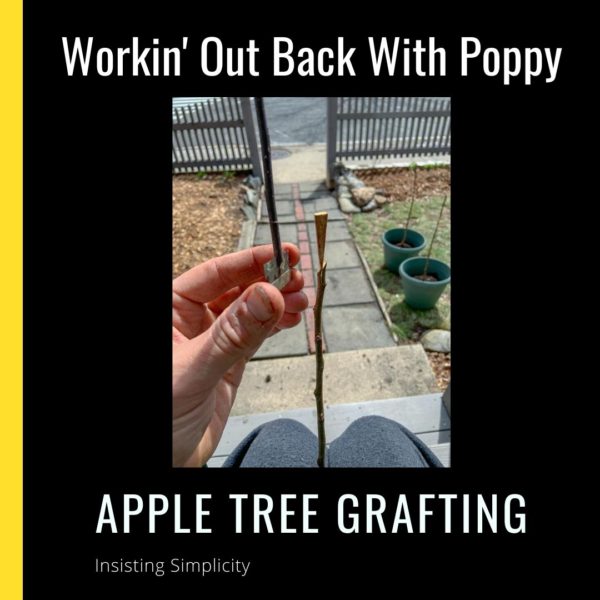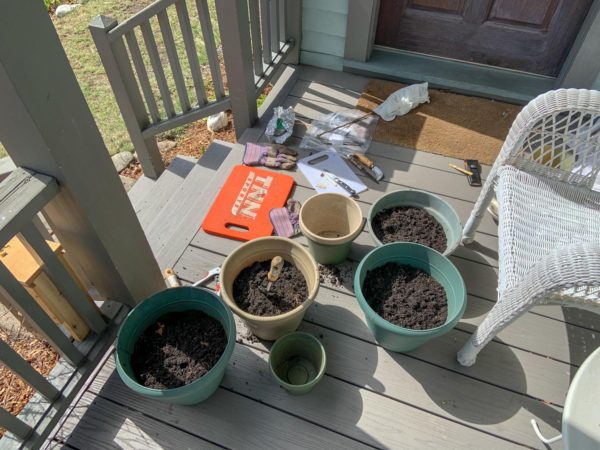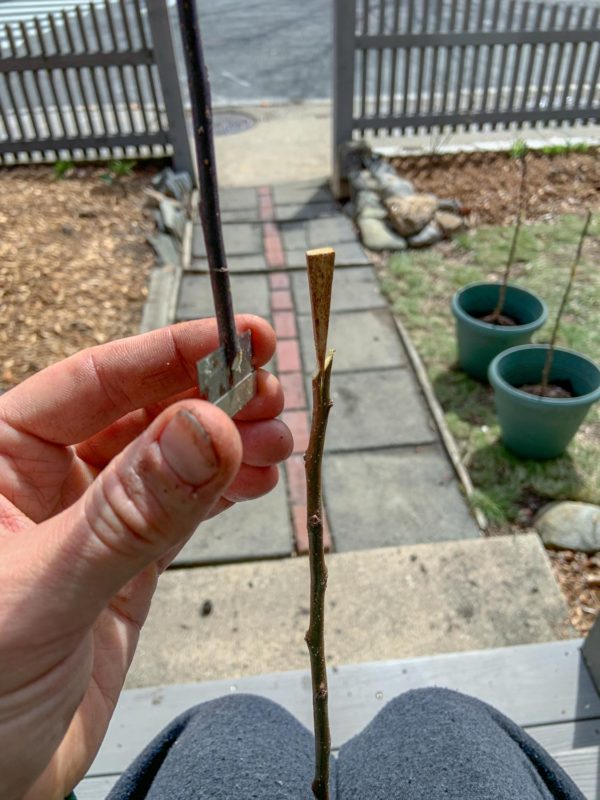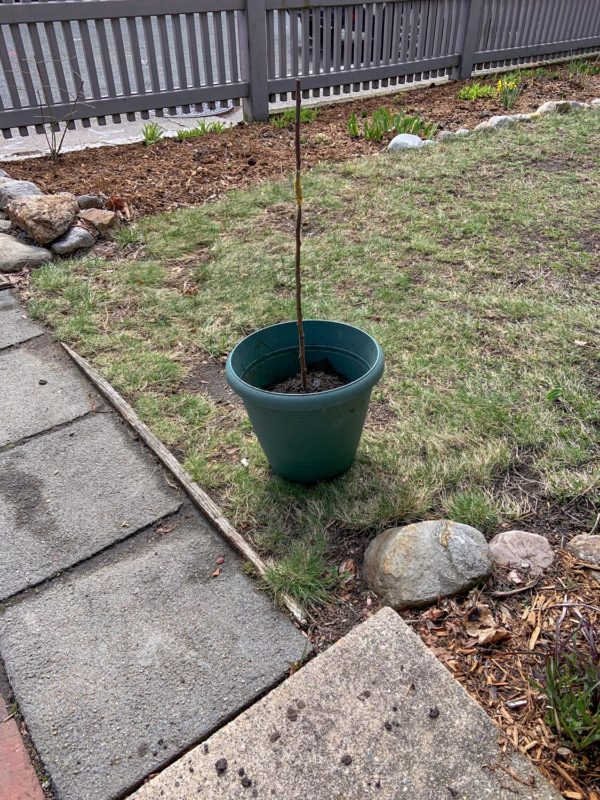As the RZA et al. say, “the saga continues.” Please enjoy today’s installment of the Working Out Back W/ Poppy series: Apple Tree Grafting.

Workin' Out Back With Poppy Series
The purpose of the Workin’ Out Back With Poppy series is to showcase permaculture techniques in action. Permaculture design is experiential. We learn by doing.
We can read books and talk to experts, but to gain a deeper understanding (and appreciation) of permaculture, we must practice it.
And who’s this Poppy character anyway? Well, if and when you’re fortunate enough to become a grandparent, I understand the “what to call oneself” conversation is a big deal. When my folks became grandparents in the not-too-distant past, the names Poppy and Meme emerged, likely in jest, but they stuck.
So, Dad is now Poppy and these are the tales of workin’ out back.
Related:
First post: Workin’ Out Back with Poppy
Initial Stumbles with Apple Tree Grafting
As discussed in our last post, apple tree grafting is a simple process, but it’s not easy. Frankly, I screwed up just about everything I could my first few goes at it.
Unsurprisingly, my shoddy work stemmed from a lack of proper equipment. I brought along a few knife options “into the field,” none of them ideal, all manageable. Furthermore, I couldn’t find a decent grafting tape (at the one farmer’s supply co-op I visited), so I decided to use a wax instead. The wax, never properly hot enough, made the entire venture a sticky, messy and imprecise affair… at least in the beginning…
If you’ll recall, Poppy and I only completed six of the ten rootstock/scion pairs, leaving four left.
I figured it might make sense to revisit ol’ Sepp and refine my approach.
Revisiting Sepp Holtzer
One thing was clear, I was not following the guidance of Mr. Holtzer. Enthusiasm fueled my actions. Mistakes…mistakes were made. Rereading Sepp Holtzer helped me slow down a bit and focus on the main concept:
It is necessary to achieve a good contact between the cambium layers of the rootstock and scion…neat work is particularly important. All cuts must be clean and you must not touch them, because this will contaminate the surface of the wound. For cutting you need a very sharp “budding knife,” which is only used for this purpose.
Second Time Around with Apple Tree Grafting
For the second attempt, I prepared better. I made sure to have all of my tools within close proximity. Importantly, I grafted the remaining four on our front porch, giving me access to a stovetop only a few feet away to melt wax. Maintaining an appropriate temperature (nearly a liquid, but not quite, think three bears), proved to be a key consideration.

I found an alternative to the sharp, but not super effective pocket knives: a small, but extremely sharp and sturdy kitchen knife. After researching “budding knives” a bit, I realized that certain kitchen knives are nearly exactly the same shape. My replacement performed admirably, bolstering my confidence.

As I got into the rhythm, concerns of “hurting the wood” melted and more deliberate knife strokes emerged. Cleaner lines, and ultimately, a better fit for the whip and tongue graft resulted. Using a hotter wax, I covered the entirety of the graft area, without the sticky, drying resin pulling apart the union. Awesomeness.
Conclusion
How will these apple trees turn out? I have no idea. Last post, I threw out a number at 15% probability of success from the early apple tree grafting (arbitrary, unscientific and quite pessimistic).
This second round? I’m at a coin flip with these little friends.

I think I learned a couple things along the way about grafting apple trees, which is nice and it will inform my decision-making going forward.
Most importantly, I’m planting trees. The action brings me closer Nature, opening my mind and body to our inextricable interconnection.
I see and hear and smell and touch things differently when I’m down in the soil.
I feel her pain and sorrow and disappointment… in us. How we consistently fail her, rape her and stack up her “precious” stuffs, while tossing aside her “superfluities” so carelessly, with such little thought.
She’s speaking, will we hear?
When a man plants a tree he plants himself. Every root is an anchor, over which he rests with grateful interest, and becomes sufficiently calm to feel the joy of living. He necessarily makes the acquaintance of the sun and the sky. Favorite trees fill his mind, and, while tending them like children, and accepting the benefits they bring, he becomes himself a benefactor. He sees down through the brown common ground teeming with colored fruits, as if it were transparent, and learns to bring them to the surface. What he wills he can raise by true enchantment. With ships and rootlets, his magic wands, they appear at his bidding. These, and the seeds he plants, are his prayers, and by them brought into right relations with God, he works grander miracles every day then ever were written.
-John Muir
Next Steps...
Well, that’s it for now on apple tree grafting. I hope you enjoyed the mental meandering regarding this topic.
Are you ready for grapes?

